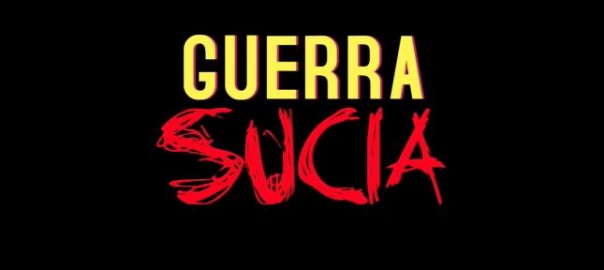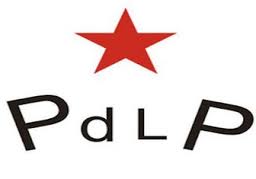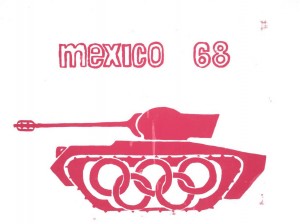Massacre in Chilpancingo
On December 30, 1960, there was a gathering In Chilpancingo of students, professors, workers and citizens to protest against the authoritarian government of Raúl Caballero Aburto. They were met by police violence and neutralized through armed confrontation.
This event was preceded by social and student mobilizations calling for the governor’s ouster. There was a municipal coalition promoting strikes and tax boycotts, many schools in Guerrero went on strike, and civil employees joined the movement.
A critical event was the murder of an electrician connected to the movement (FEMOSPP 2006) who was shot by police as he was hanging up a protest sign. This provokes indignation and led to a massive demonstration in Chilpancingo calling for the governor to resign. The 24th Infantry Battalion was ordered to quell the protest and they shot live ammunition, leaving 15 dead and scores of wounded.
Creation of the Civic Association of Guerrero
The Civic Association of Guerrero (ACG) was formed on September 2nd, 1959 under the leadership of Genaro Vázquez. It consisted of a group of dissidents from Guerrero in Mexico City, among them Darío López and Blas Vergara. It’s purpose was to expose the abuse and tyranny of Governor Raúl Caballero Aburto (1957-61) directed towards peasants and farmers. His regime repressed peasant mobilizations, used continual arrests, and was characterized by corruption (FEMOSPP 2006).
Iguala Massacre 1962
On December 30th, 1962, due to the electoral fraud committed by newly “elected” governor Miranda Fonseca, there was an organized “Civic Work Stoppage” and march at the Iguala Municipal Plaza. The response was sending in police and army forces. According to Gómez kara (1992), “After a moment of provocation, the armed forces started shooting at the crowd, leaving 7 dead, 14 wounded and arresting 280 people.” (19). After this event, Genaro Vázquez, leader of the ACG, is declared wanted and must go underground.

Th formation of the Central Independent Peasant Association (CCI)
In january 1963 the Central Independent Peasant Association is formed with the help of the Guerrero Civic Association (ACG) and the Guerrero Civic Movement, Peasant Section, which organized a political party whose platform was the just reallocation of agricultural production and the protection of peasant rights (FEMOSPP, 2006). This politeical party is important to the peasant movement, as it promotes the candidacy of Ramon Danzós Palomino and an alliance with the Mexican Communist Party (PCM), in which Lucio Cabañas was a key figure.

The new political party also planned various congresses to bring together farm and peasant organizations in Guerrero and formed an alliance with a clear political program in favor of peasant rights. These various congresses denounced the manipulation of coffee and palm oil prices, the mismanagement of tropical forests and the corruption of tyne bank for Agricultural Credit (FEMOSPP, 2006)
The Massacre at Atoyac, May 18, 1967
A large crowd of 2500 people gathered at Atoyac’s central plaza on May 18, 1967 demanding the restitution of Professor Alberto Martínez, who had been improperly fired because of his progressive ideas (FEMOSPP, 2006). Due to the size of the protest, the government sent the judicial police and when they could not disperse the crowds they resorted to violence, continuing a long line of massacres directed at the population and recurring in the state of Guerrero.
This needless massacre moved Lucio Cabañas to organize the peasants into a guerrilla movement in the jungles of Guerrero.
The Acapulco Massacre of Palm Oil Harvesters
On August 20, 1967, 800 workers from the National Palm Oil Company of Guerrero broke in to a compound that cached a large amount of police weapons. A shootout ensued and the government sent in police and military troops to break up that revolutionary action. The building was surrounded and the armed forces fired indiscriminately at the workers inside. There is no clear account of the result of the action but a military source reported that there were 40 dead and hundreds of wounded. (FEMOSPP, 2006)
The government used persecution and repression as a security strategy, arresting 215 people and sending 44 of them to military facilities and the rest to municipal jails. Lucio Cabañas is blamed, along with Alejandrina de los Santos (from the United Democratic Women of Coyuca) and other militant figures. Repression of all peasant movements becomes the norm.
Creation of the Party of the Poor and its Armed Front, The Justice Peasant Brigade
After the Atoyac massacre, Lucio Cabañas set to plan and constitute clandestine revolutionary armed political organizations. In 1967 The Party of the Poor is born, along with its armed from, the Justice Peasant Brigade, which had a military base and training, and which organized offensive operations. It also supported temporary struggle commissions that gathered people for military training to accomplish specific operations and then return to their towns and promote the Party of the Poor. The politics of these organizations were Marxist-Lenininst, based on the ideology that required proselytizing, entering the people, becoming the people, being the people, as well as learning from the people, nopt coming to teach the people. (FEMOSPP, 2006)
The party, the brigade and the various struggle commissions performed many insurgent operations, among them, taking over haciendas, expropriating lands and institutions, and alliances with diverse revolutionary groups. The Party of the Poor joined the Clandestine Revolutionary Workers Party of the United People (PROCUP) in 1968.
The formation of the National Revolutionary Civic Association
The National Revolutionary Civic Association (ACNR) was created in 1968 under the leadership of Genaro Vázquez. Previous attempts at government reform had failed, so the Association puts forth a political program summarized in “Four Points”:
1. The overthrow of the oligarchy formed by big capitalists, landowners, and pro-imperialist government rulers.
2. The establishment of a coalition governnment comprised of workers, farmers, peasants, students, and progressive intellectuals.
3. The achievement of full polltical and economic independence for Mexico.
4. The institution of a new social order that benefits the working majorities of the country.
With this plan, the ACNR began its armed operations, made gains and increased its numbers and support.
The Tlatelolco Massacre
On October 2nd, 1968, there was a massive student and civil march ending with a protest at the Plaza of the Three Cultures, in Tlatelolco, Mexico City, against the government of President Gustavo Díaz Ordaz, highlighting his authoritarian regime, his use of the military and police to quell student protest, and his heavy handed security measures around the upcoming Olympic Games. The country and the movement were on the world stage. However, the peaceful protest ended with the ended in a massacre, with the indiscriminate shooting and clampdown of students, marking one of the worst events in Mexican history
Leading to the growth of the 1968 student movement was an event in which the police attempted to stop a fight between students at a soccer game at the San Ildefonso high school. The beat and seriously injured many of the students. This led to students and teachers organizing a strike to protest the police action. When the government tried to end the strike, the students and teachers refused, so they broke down the door with a bazooka, killing various people inside (Story, 2012, 13). This was a turning point in the national student movement. However, each protest was put down more and more violently.
The National Strike Council (CNH) formed by members of many universities and high schools resolved to intensify the protest movement against President Díaz Ordaz. On August 28 it called for a massive march on the Zócalo (At the Plaza de la Constitución), which was neutralized by the army and police using tanks and helicopters and wounding a number of protesters. This was a prelude to the October 2nd event.
The CNH continued its mobilization in schools and universities and the government ordered the army to occupy the Autonomous National University (UNAM) and dislodge the students in order to eliminate the movement’s organization. The occupation lasted until October 1st.
On the second, a civic march was called to protest against the government and to arrive at the Plaza of the Three Cultures in Tlatelolco. There were about 500 protesters, students, workers, teachers, civilians, children. There were many banners and speeches, and a strong police presence, including helicopters. Around 6 PM one of the helicopters shot a flare over the ministry of foreign relations (one of the buildings at the plaza). About 20 minutes later there were more flares, a signal to the army to attack. From one of the buildings, snipers (apparently working for the government) began shooting at the crowd. Immediately, between five and ten thousand soldiers, tanks and policemen appeared. The conflict was disastrous, with people falling dead and wounded everywhere, including some soldiers shot by the snipers. The exact number of dead, wounded and disappeared that day is still unknown. “According to the government, there were 3000 dead” (Story, 2012, 16).



